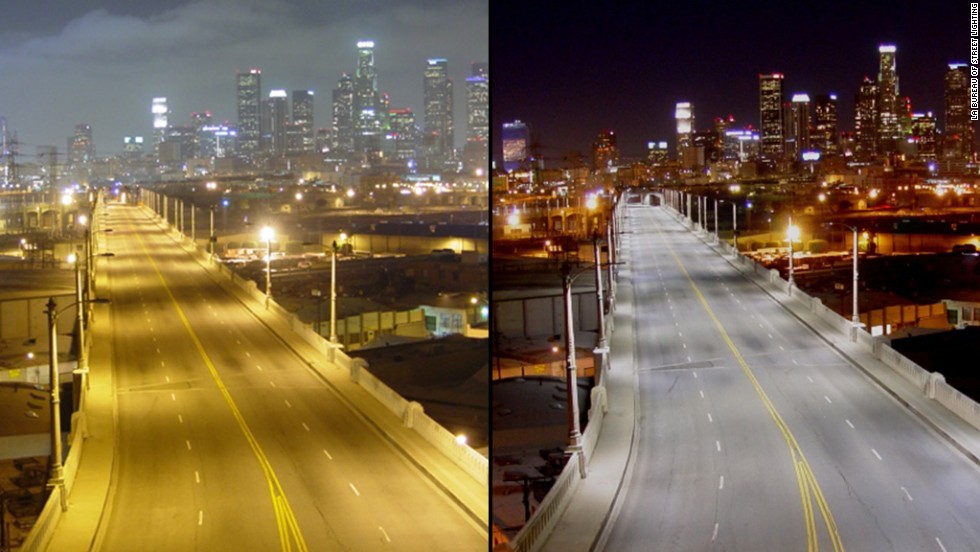New scientific evidence confirms the "phototoxic effects" of short-term exposures to high-intensity blue light, as well as an increased risk of age-related macular degeneration after chronic exposure to lower-intensity sources, according to the French Agency for Food, Environmental and Occupational Health & Safety, known as ANSES. Age-related macular degeneration, a leading cause of vision loss among people over 50, causes damage to the macula, a small spot near the center of the retina that's needed for sharp central vision.
Yet protection from the harmful effects to the retina offered by "anti-blue light" screens, filters and sunglasses varies, and their ability to preserve sleep rhythms is not proven, ANSES also said.
Lighting 101
LEDs or light-emitting diodes consist of a semiconductor chip positioned on a reflective surface; when electricity runs through the semiconductor, light is produced.
Blue light itself is not new. Sunlight produces rays of blue that have higher energy than other wavelengths in the light spectrum. And old-fashioned lightbulbs produced some blue light, though less than what is emitted by energy-efficient curlicue (fluorescent) lightbulbs or LEDs.
LEDs are "undergoing rapid technological and economic development as a new source of lighting. For many years, they were only used in electronics but are now found as integral parts of lighting systems," ANSES wrote in a 2016 report. Today, LEDs are used for domestic purposes as well as industrial and commercial ones.
In the United States, LED products have been seeing increased adoption, a positive development in terms of energy consumption because they use significantly less electricity per lumen than many traditional lighting technologies, according to the US Department of Energy. Market penetration of LED lighting is increasing and will represent 48% of total lumen-hour sales by 2020 and 84% by 2030, the agency estimates.
ANSES differentiates types of blue light in its report. For example, "warm white" domestic LED lighting has weak phototoxicity risks, similar to traditional lighting, according to ANSES. However, other LED lighting sources, including the newest flashlights, car headlights and some toys, produce a whiter and "colder" blue light that is more harmful.
Additional scientific evidence
An American study also described the use of blue light as "increasingly prominent" in today's world. Lead author Gianluca Tosini, professor and chief scientific research officer at Atlanta's Morehouse School of Medicine, said blue light can indeed damage the eyes, but only if the wavelengths are below 455 nanometers and the intensity is quite high.
"There are blue light photoreceptors in the retina that directly communicate with the brain circadian clock," Tosini, who was not involved in the ANSES report, wrote in an email. "It is true that exposure to light in the evening affect sleep and circadian rhythms mostly by inhibiting the synthesis of the sleep promoting hormone melatonin."
Yet he also said that a few studies have shown that "exposure to blue light in the middle of the day may have beneficial effects" in that it increases alertness.
Janet Sparrow, a professor of ophthalmic sciences at Columbia University, wrote in an email that "blue light is thought to help individuals to maintain the daily rhythms that allow sleep."
The retina "accumulates fluorescent molecules generally referred to as lipofuscin," explained Sparrow, who was not involved in the ANSES report. "These compounds become more abundant with age and are sensitive to blue light." Early evidence suggests that this light sensitivity may lead to unhealthy optical responses over the long term, she said.
Tosini noted that scientists are convinced that exposure to LED blue light in the range of 470 to 480 nanometers for a short to medium period (days to weeks) should not significantly increase the risk of eye disease, but the same is not necessarily true for long-term exposure (months to years).
"I believe that more studies are needed on this topic that is really affecting the health of many citizens," he said. He added a potential solution to the problem of blue light would be to develop intelligent lighting systems that change the composition of lighting throughout the day.
An unrelated 2017 review of scientific studies also lends support to the finding in the ANSES report that sunglasses and filters may not protect us. The review investigated the potential benefits or harms of "blue-blocking" lenses, marketed to protect against phototoxicity, and found "a lack of high quality evidence" to support their use "for the general population to improve visual performance or sleep quality, alleviate eye fatigue or conserve macular health."
However, Sparrow said that, generally, sunglasses block ultraviolet light, and those "that have a yellow tint should be preferred as they will also reduce the amount of blue light that reaches the retina."
Ultimately, ANSES believes the recommended maximum limit on short-term exposure to blue light should be revised downward, even if most people would only rarely be able to meet that level. Children and teenagers, whose eyes do not fully filter blue light, are particularly sensitive to the harms of cold blue light, the French authority noted. The agency also recommended that only low-risk LED devices be available to consumers and the luminosity of car headlights be reduced.
Bagikan Berita Ini

















0 Response to "LED lights damage eyes and disturb sleep, European health authority warns"
Post a Comment